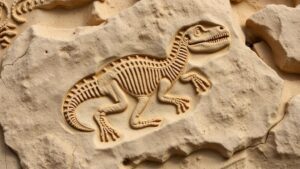Ancient Rainforests Encased: Unearthing Prehistoric Ecosystems in Amber
Ancient Rainforests Encased: Unearthing Prehistoric Ecosystems in Amber
Amber, often referred to as natures time capsule, is an extraordinary natural substance formed from the fossilization of tree resin. This organic gemstone has captivated the hearts of rockhounds and mineral collectors for centuries due to its beauty and the remarkable prehistoric ecosystems it can preserve. Distinctive for entrapping insects, plant material, and other organic matter, amber provides a unique glimpse into ancient rainforests, revealing biodiversity from millions of years ago. This article explores the significance of amber, its formation, and the implications for collectors interested in prehistoric ecosystems.
The Formation of Amber
Amber originates from the resin of ancient coniferous trees, primarily from the families Pinaceae and Cupressaceae. Over millions of years, this viscous substance undergoes a process of polymerization and hardening, ultimately transforming it into a solid, fossilized state. The timeline for this process can span from 20 million to 320 million years ago, resulting in various types of amber, including:
- Baltic Amber: Approximately 44 million years old, primarily derived from the species Pinus succinifera.
- Dominican Amber: About 20 to 30 million years old, famous for its clarity and diverse inclusions.
- Mexican Amber: Ranging from 15 to 23 million years old, known for its bright yellow color.
During this fossilization process, the sticky resin can trap living organisms, including insects, spiders, and even small vertebrates, preserving them in a state comparable to freeze-drying. This unique feature allows researchers and collectors to study ancient ecosystems.
Amber as a Record of Biodiversity
The inclusions found in amber provide critical insights into prehistoric climates and ecosystems. For example, studies conducted on Dominican amber have revealed a diverse insect population, including over 3,000 species of insects, which suggests the existence of complex food webs in ancient rainforests. This diversity is supported by findings from a study published in the journal Science, highlighting that amber can preserve up to 70% of the organisms encapsulated within it.
Notably, the presence of pollen grains in amber also supports the understanding of past flora. For example, the discovery of angiosperm pollen in amber dating back to the Late Cretaceous period indicates that flowering plants were already proliferating. These findings are invaluable in reconstructing plant evolution and ancient climates, offering a window into the ecological dynamics of prehistoric rainforests.
Practical Tips for Rockhounds and Collectors
For those interested in collecting amber, the following practical tips can enhance the experience:
- Know Your Sources: Investigate reputable vendors or mineral shows known for high-quality amber. Authenticity is crucial, as resin imitation can appear similar but lacks historical significance.
- Understand the Types: Familiarize yourself with the different types of amber and their geographic origins. This knowledge helps to assess value and significance when collecting.
- Look for Inclusions: Focus on pieces with visible inclusions, as they can greatly increase value and scientific importance. Seek out amber with well-preserved fossils or rare specimens.
- Storage and Care: Store amber in a cool, dry place to prevent degradation or damage. Avoid exposure to direct sunlight and chemicals, which can alter its appearance.
The Scientific Significance of Amber
Scientific interest in amber extends beyond mere aesthetics. Researchers utilize modern imaging techniques, such as computed tomography (CT) scanning and synchrotron radiation, to study the inclusions without damaging the specimen. A notable example includes the 2016 discovery of a 99-million-year-old feather embedded in amber, which provided unprecedented insights into the evolution of feathers in dinosaurs and their relation to modern birds.
Also, amber has become an essential tool for paleoclimatology, the study of ancient climates. By examining the types of organisms preserved and their predicted environmental conditions, scientists can infer temperature, humidity, and ecosystem structures of ancient periods, which can inform contemporary climate change models.
Conclusion: The Collecting Journey
Amber serves as a key to understanding ancient ecosystems, providing insights into biodiversity, climate, and the life forms that once thrived within prehistoric rainforests. For rockhounds and collectors, ambers not only hold aesthetic and monetary value but also serve as valuable artifacts that contribute to scientific knowledge. By following best practices when collecting and remaining mindful of the historical significance attached to each piece, enthusiasts can engage in a rewarding exploration of both nature and science.
With careful consideration and informed decision-making, collectors can build impressive collections that not only thrill the eye but also unlock the mysteries of our planets past.


